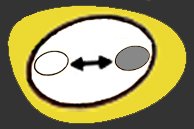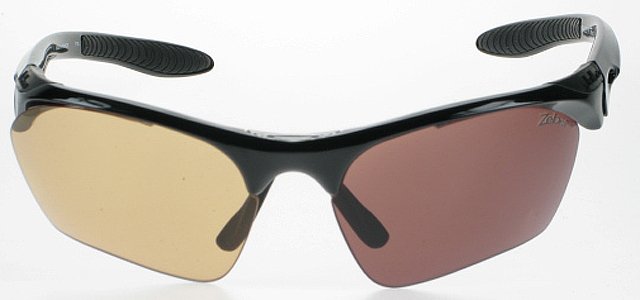
Photochromic Lenses Explained
What are photochromic lenses and which type of prescription lenses should I choose for my glasses or sports sunglasses?

What are Photochromic Lenses?
The word "photochromic" comes from two Greek words "photos" meaning light and "Chroma" meaning colour—so photochromic simply means something that changes colour in response to light. In relation to sunglasses, photochromic lenses darken or lighten dependent on their exposure to ultraviolet (UV) radiation. For example, once the UV is removed by walking indoors or reduced by cycling through a forest, the lenses will gradually return to their clear state or a lighter tint respectively.
Photochromic lenses were originally developed in the 1960’s and made from glass. They worked a bit like pieces of old-fashioned, photographic film. Film darkens because it contains silver based chemicals that clump together when light falls on them. Early photochromic lenses contained similar silver chemicals and darkened the same way. Unlike photographic film, which darkens permanently, the photochromic lenses could change back again and clear when the light level fell back to normal.
Modern photochromic lenses are now made out of polycarbonate or plastic and instead of silver chemicals they contain organic (carbon-based) molecules that react to light in a slightly different way. Instead of clumping together, they change their colour and size when ultraviolet light strikes them. Although each molecule changes by only a fraction of a nanometre, when many molecules respond in the same way the effect can be dramatic as more and more light is progressively blocked out.
Today's photochromic lenses can offer different categories of sun protection to meet specific needs. For example, you can buy lenses that will start clear and change colour. These are ideal in glasses. There are others that will start as a tint and become progressively darker. These are ideal in sunglasses.
How long does it take Photochromic Lenses to change colour?

Typically, photochromic lenses darken substantially in response to UV light in less than one minute (see image on left where the right lens has been exposed to sun light for one minute), and then continue to darken very slightly over the next fifteen minutes. The lenses will begin to clear as soon as they are away from UV light, and will be noticeably lighter within two minutes and mostly clear within five minutes. However, it normally takes more than fifteen minutes for the lenses to completely fade to their non-exposed state. The best quality photochromic lenses can offer very quick transition times. Julbo’s Zebra lens for example boast high speed activation of between 22 to 28 seconds.
However, as photochromic compounds fade back to their clear state by a thermal process, the higher the temperature, the less dark photochromic lenses will be. This thermal effect is called "temperature dependency" and prevents these devices from achieving their full effect in very hot weather. Conversely, photochromic lenses will get very dark in cold weather conditions, which make them more suitable for snow skiers than beachgoers while outside. Once inside, away from the triggering UV light, the cold lenses take longer to regain their clear color than warm lenses.
What are the advantages and disadvantages of Photochromic Lenses?
There are both advantages and disadvantages to photochromic lenses. These are as follows:
Advantages:
- They will provide the correct amount of protection for the varying light conditions you experience.
- They are an excellent solution for people who need different glasses for different conditions and hate constantly switching between their normal glasses and their shades or between different colours of interchangeable lenses.
- They absorb 100% UV radiation that can otherwise damage your eyes.
Disadvantages:
- They do not adjust immediately. It takes a few minutes for the lenses to change from light to dark or vice versa.
- For lenses that start clear, they are likely to darken more or less every time you go outside whether it's sunny or not as it reacts to the ultraviolet light which is still around on cloudy days. However, they will quickly go clear again when indoors.
- They don’t always work effectively in cars because windscreens naturally screen out most of the ultraviolet light. This has led to the development of specialist photochromic lenses for driving. See below.
Can I use Photochromic sunglasses for driving?
Because Transitions lenses and other popular photochromic lenses rely on UV light to darken, general purpose photochromic lenses do not darken behind automobile and truck windshields that block the sun's UV rays. To overcome this problem, lens manufacturers have introduced photochromic lenses that are designed primarily for outdoor wear and for use when driving in sunlight.
The best lenses on the market to date are “Drivewear” lenses which are photochromic polarized lenses. By combining photochromic and polarization technologies, Drivewear lenses reduce glare and maximize visual acuity in bright light conditions. The lenses are capable of sensing and reacting to varying light conditions both outdoors and behind the windshield of a car or heavy goods vehicle. Drivewear lenses currently are available in plastic and polycarbonate lens materials and in single vision, bifocal and progressive lens designs.
Are Photochromic Lenses beneficial in children’s glasses?
Experts say the risk for cataracts and other age-related eye problems is associated with a person's lifetime exposure to the sun's UV rays, so protecting your child's eyes early on could pay dividends when he or she is a mature adult. As kids tend to spend more time outdoors than most adults, photochromic lenses are ideal as they block out all UV radiation. However, if you do not want to go to the expense of having photochromic lenses, at eyekit.co you can also buy glasses that have a UV coating on the lenses. They will not act as sunglasses but will block all UVA radiation.
What are the best bands of Photochromic Lenses?
The brand manufacturers have created many brand names for photochromic lenses. These include Transitions, Reactolite, Reactions and Graduations. However, they are all photochromic lenses.
The most common photochromic brands are
- Transitions Lenses. They are the most popular brand of photochromic lenses today. They are available in a variety of options including Standard Plastic, Polycarbonate, 1.6 and 1.67 Lenses. They are the fastest reacting lens on the market, reacting into sunglasses within 30 seconds of UV exposure.
- Reactolite Lenses. Reactolite is a brand name given to a Glass photochromic lens. They do not react as well as the transitions and are much heavier to wear. However, they work much better behind a car windscreen than the Transitions.
What prescription Photochromic Lenses are offered by eyekit.co?
If you want a prescription that includes photochromic lenses, we will provide you with the latest ‘Transition VII’ lenses. At eyekit.co we believe these are the best lenses on the market and most suitable for outdoor activities. You can be reassured to know that they are also the same lenses used by many of the best named sporting brands such as Oakley and Julbo and are a higher level of transiton than many opticians on the highstreet.
We offer two types of transitions prescription lenses:
Transitions Signature VII
These lenses replace transitions VI lenses as the most balanced everyday lenses yet. They are more responsive in more situations. They provide the ideal combination of darkness, fast fade back speed and indoor clarity.
Key Features:
- Completely clear indoors and at night
- Fast fade back speed
- Block 100% of UVA & UVB rays
- Fit any prescription and frame
- Suitable for any age including children
- Light transmission between 95% to 18%
- More reactive to indirect light
- Transitions XTRActive
These offer increased darkness outdoors, even in hot temperatures. They are ideal for wearers who spend much of their day in bright, sunny conditions. Indoors, they have a comfortable hint of tint. Specifically designed to be extra dark outdoors, they also moderately activate inside the car or under an aeroplane canopy.
Key Features:
- Hint of a tint indoors and at night
- Fast fade back speed
- Block 100% of UVA & UVB rays
- Fit any prescription and frame
- Suitable for any age including children
- Light transmission between 83% to 10%
- More reactive to indirect light
- Activates behind a car windscreen
- Available in grey and brown
- Ordering Prescriptions
- Lens Options Explained
- About Glasses
- About Sunglasses
- About the Eyewear Brands
- Eyecare
- Eye Conditions
- Frequently Asked Questions
- Blog
- About Us
- Why Choose Eyekit for your Prescription?
- Varifocal Prescriptions
- Tint Colour Options for Prescription Lenses
- Special Offers
- Guide to Buying Eyewear Online at Eyekit
- Choosing Eyewear for Sport
Latest From Eyekit
Rain Rain Go Away- Why you need a Crystal Vision Coating on your Prescription Glasses and Sunglasses
The snow was short lived but us Brits know that the Winter/ Spring showers have just begun. You know how it starts, you get out your bike or you figure out your hike for the day on the map and
Eyekit’s Top 10 Tips to Help You Keep Your New Year’s Resolution
Every year we make them and every year we try and try but eventually break them. So its time to stop the cycle and (maybe take up...
Our top 5 Eyewear items to Help Your Eyes this Lock Down
We have looked at our top 5 most popular Eyewear items that people needed during the last lockdown that could help you with this...
Veganuary - Can Excluding Animal Products Have an Impact on Your Eyesight?
We often make connections between diet and cardiovascular disease or obesity but we often forget that eye sight and vision loss is also linked to...
Winter Is Here
Here's how you can help out your eyes this winter. THE SUN HAS GOT HIS HAT ON- even in winter You might only think you need your sunnies...








